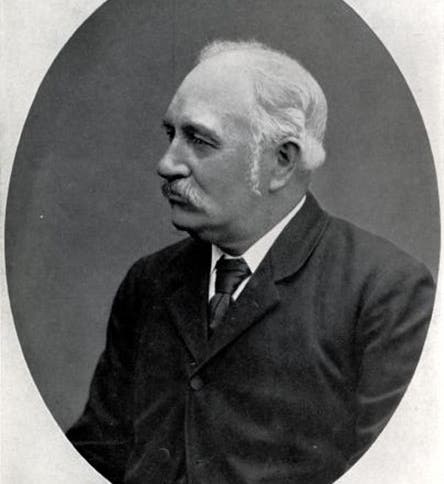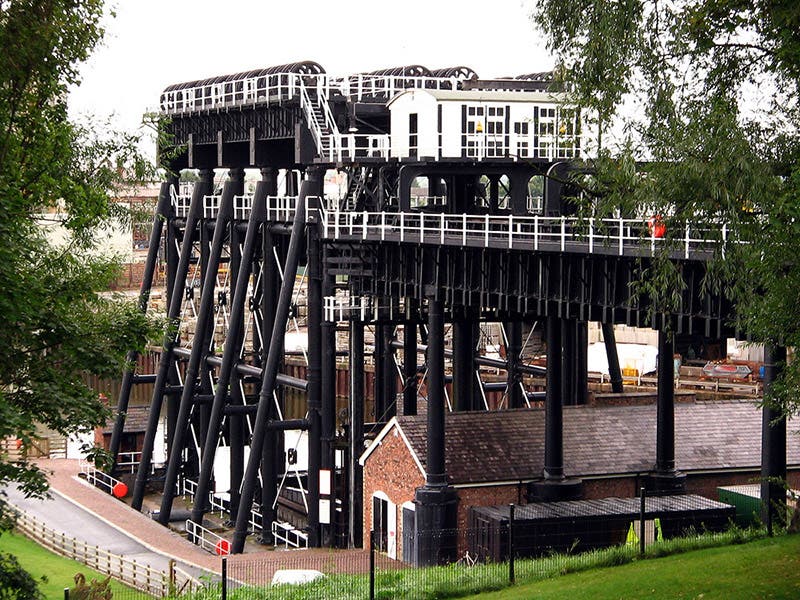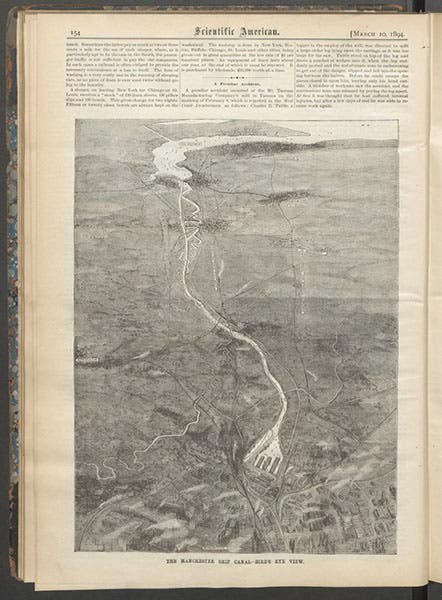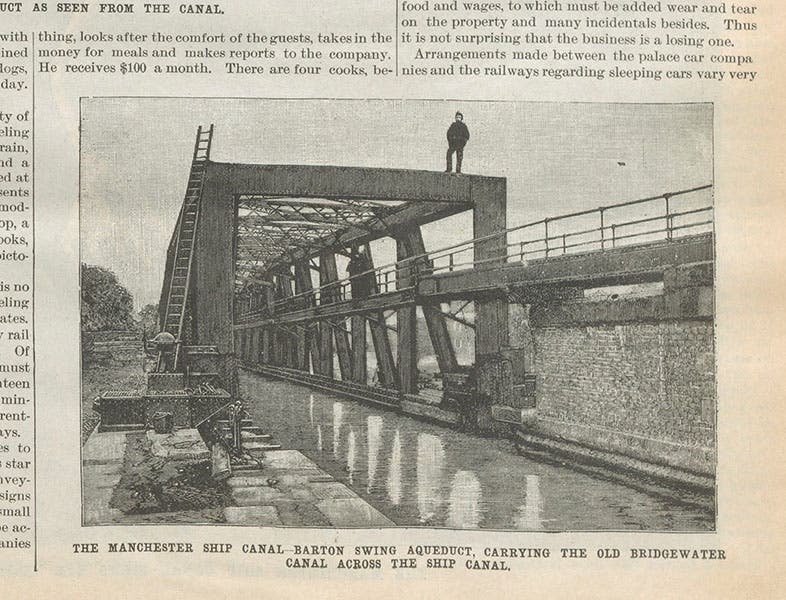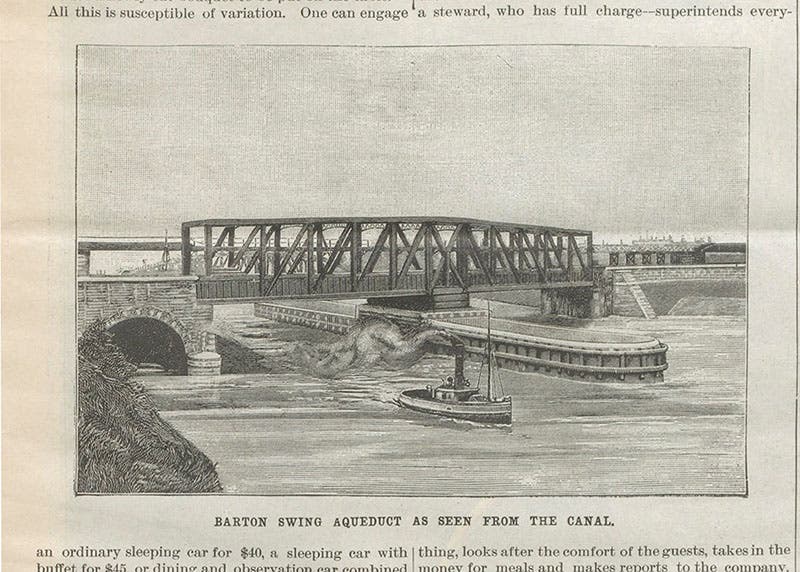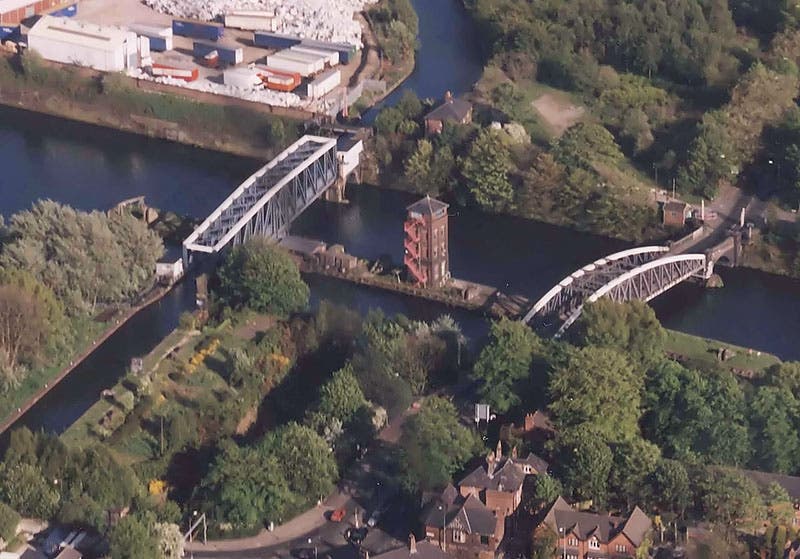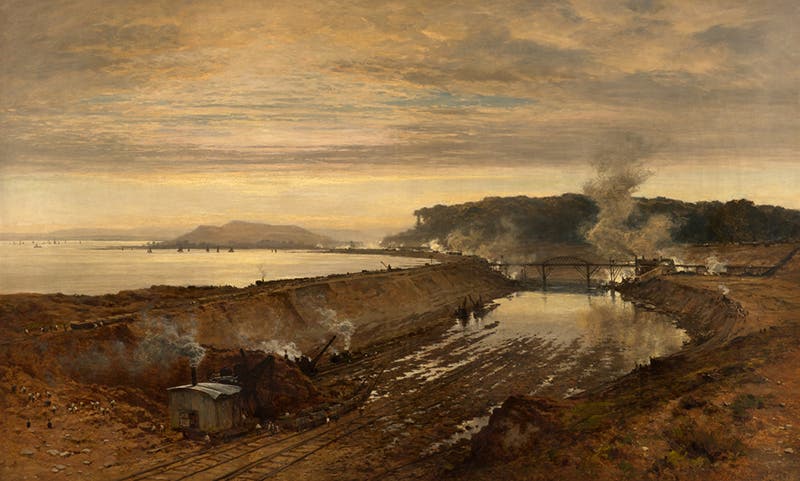Scientist of the Day - Edward Leader Williams
Edward Leader Williams, an English civil engineer, was born Apr. 28, 1828. Williams spent his entire career designing and constructing canals in and around Cheshire, the county in northwest England that includes Manchester. He first attracted attention while serving with the Trent and Mersey Canal, which connects the potteries of Staffordshire with the ports of Liverpool and Hull. At one point, the canal ran about 50 feet above the River Weaver, making the transfer of goods between the two difficult; it was Williams' idea to construct a hydraulic lift to take boats from one watery venue to the other. The Anderton Boat Lift was designed by Edwin Clark and constructed by Williams, and it opened for operation in 1875 (second image). It was and still is a great success. You can see it in operation in a short video here. We published a Scientist of the Day several years ago about another boat lift, the Petersborough Lift Lock in Ontario, designed and built by Richard Birdsall Rogers, and competed in 1904. The Anderton Boat Lift was built 30 years earlier and was the principal inspiration for the Canadian lift.
Williams was then chosen by a Manchester consortium to construct a canal linking Manchester to the Irish sea on the west coast of England. Manchester was a prominent industrial city, but it lay forty miles inland, and so it was at the mercy of the railroads and the port of Liverpool for all its imports and exports. The small Bridgewater Canal, although of historic importance, was hardly up to the task of hauling goods on a large scale. The idea was to build a canal broad enough and deep enough so that the largest ocean-going vessels could make it all the way to Manchester without stopping at Liverpool at all. It was Williams’ job to make it happen, and that he did. The Manchester Ship Canal is 36 miles long, just a little shorter than the Panama Canal (yet to be built) and one-third the length of the Suez Canal (opened in 1869). Here is a modern map that shows the path of Manchester Ship Canal, as well as that of the Bridgewater Canal. We include here a historic birds-eye view that was published in Scientific American in 1894 (third image).
Constructing the Manchester Ship Canal required moving an enormous quantity of earth, although otherwise there were few engineering challenges. But one of those challenges gave Williams a chance to show off his skills. At Barton, in greater Manchester, there was a spot where the Bridgewater Canal crossed over the River Irwell. At the time it was built, in 1761, the Barton aqueduct was quite a sensation, the first to carry a canal over a river. The new Manchester Ship Canal would follow the path of the river, but the existing Barton aqueduct would have to go, since it did not allow sufficient clearance for large ships. To take its place, Williams designed the world's first swing aqueduct. The section of the Bridgewater canal that crossed the Ship Canal was pivoted in the center and could be closed off and rotated to allow large ships to pass through. This was a first in canal engineering, and the Barton Swing Aqueduct, opened in 1894, is still in use. We show here two contemporary views of the swing aqueduct from the Scientific American feature article of 1894 (fourth and fifth images, just below), as well as a modern aerial photograph, which allows you to see the Bridgewater canal, running from top to bottom, being carried over the ship canal by the Barton Swing Aqueduct on the left (sixth image).
The Manchester Ship Canal was opened in 1894, after six years of construction, marking the debut of the new "Port of Manchester", which soon grew to become the third-busiest port in all of England, much to Liverpool's chagrin. The canal continued to be a great success up until 1980, when ships finally outgrew the canal, and the gross tonnage is now way down from the peak years of the mid-20th-century. But it is still a going concern, a testament to Williams' engineering skill and vision.
We thought we would include a painting of the digging of the Manchester Ship Canal, because it was done by Edward’s’ brother, Benjamin Williams Leader. No, that is not a misprint – Benjamin was piqued by the fact that there were too many artists named Williams, so one day, he decided to exchange his middle and last names. Why not?
So far as I know, brother Benjamin never painted a portrait of brother Edward; indeed, there are very few images of our civil engineer anywhere. We settled for a sharp photograph of Edward in his later days (first image).
Dr. William B. Ashworth, Jr., Consultant for the History of Science, Linda Hall Library and Associate Professor emeritus, Department of History, University of Missouri-Kansas City. Comments or corrections are welcome; please direct to ashworthw@umkc.edu.

